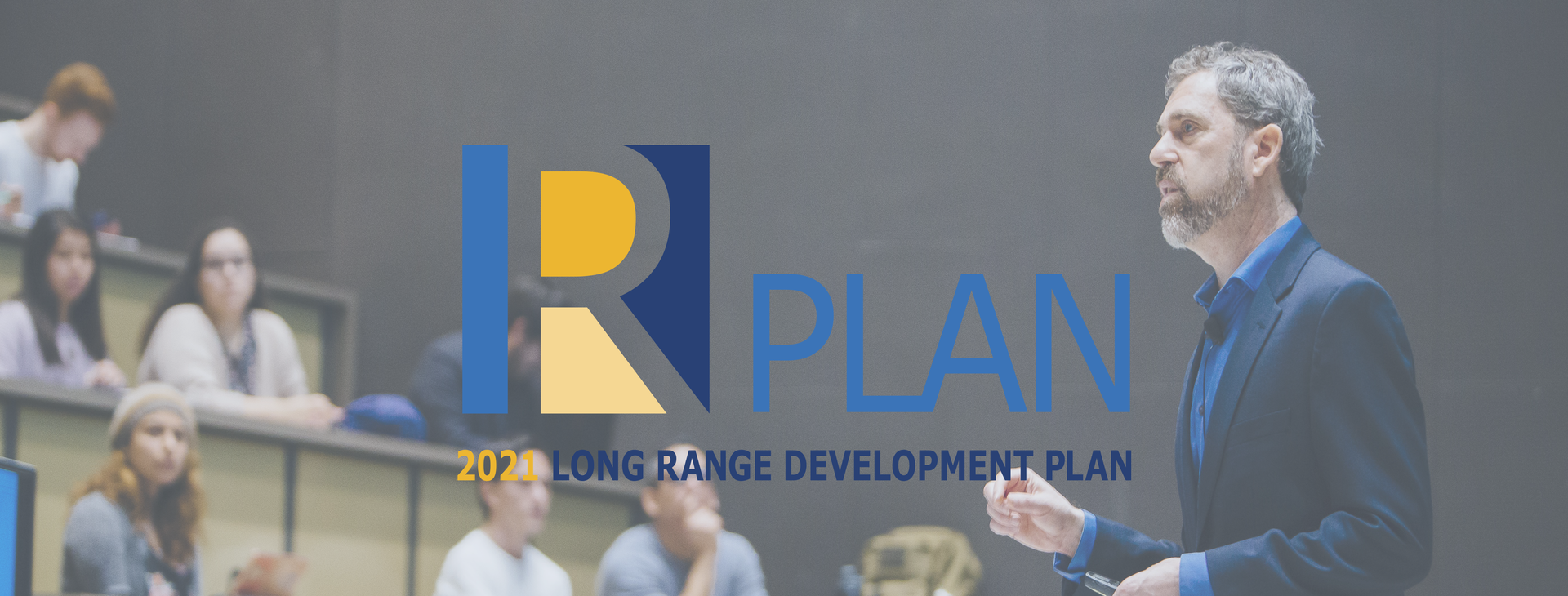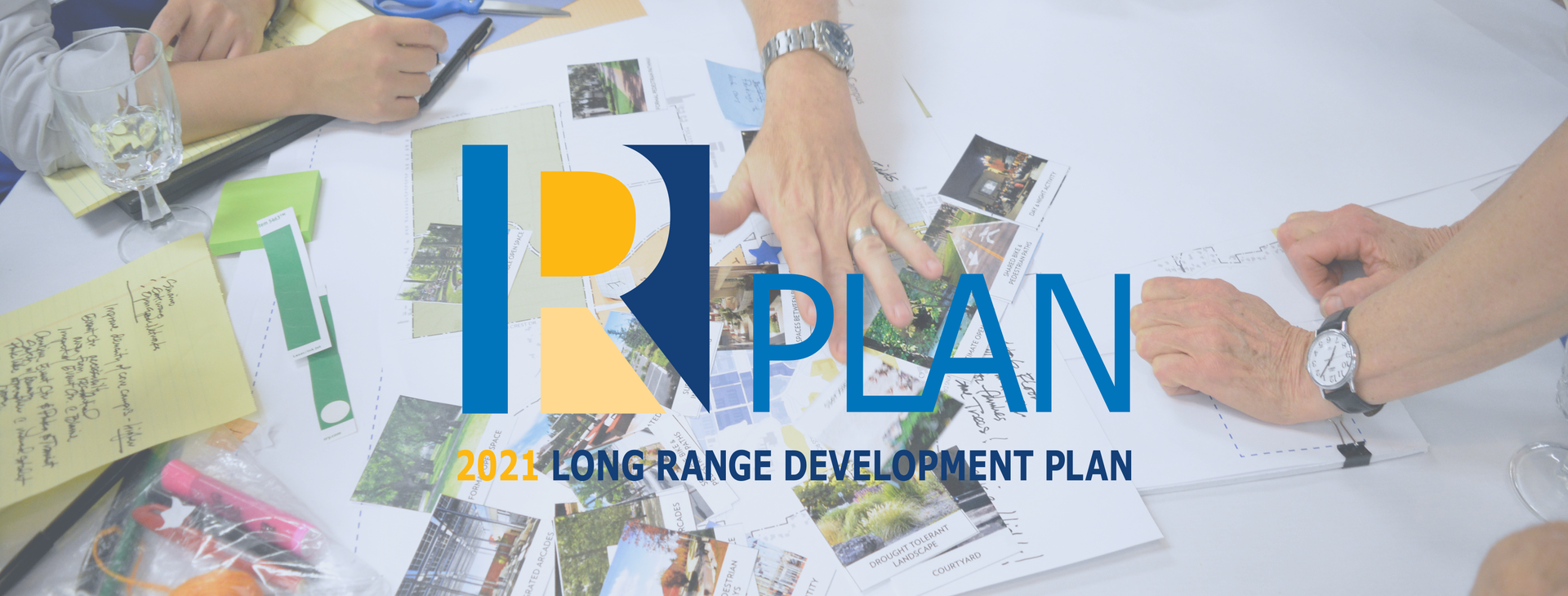Why A New Long Range Development Plan (LRDP)?
UC Riverside has been growing consistently for many years. In pursuit of its own strategic enrollment goals, as well as in cooperation with State requirements regarding overall California resident and resident transfer student enrollment levels, UCR has steadily grown its student population year over year. For example, in Fall 2018 the campus enrolled approximately 600 more students than it did in 2017 – growth of nearly 3 percent.
The 2010 LRDP makes its land use assumptions on a projected maximum population of 35,000 students. UC Riverside has surpassed this important enrollment milestone. UC Riverside’s current vision regarding enrollment and the physical development necessary to support continued future growth.
How is the LRDP Related to the Strategic Plan?
As UCR enters into the development of its next strategic plan, it is helpful to understand the differences between the strategic plan and the LRDP. The LRDP is a long-range land use plan that looks at very broad growth assumptions and considers their environmental impact. The strategic plan focuses on UCR’s mission, vision, and values, and provides direction regarding our priorities and aspirational goals. The strategic plan drives the UCR operational and capital budget priorities, while the LRDP provides parameters for how land use can support those priorities. A strategic plan is important to guide an organization, but not required. The LRDP is required by the state.
Who All Were Involved?
The LRDP is an important reference document for the campus, University, and the general public. The Regents of the University of California, as well as the California Code of Regulations, require each campus to have a current LRDP, also subject to the provisions of the California Environmental Quality Act (CEQA) that requires decision makers and the public be informed of the potential environmental effects of a proposed project. Consequently, the Regents must consider and certify the CEQA document prior to approving an LRDP.
UC Riverside has prepared a new LRDP and LRDP Environmental Impact Report. The Campus Planning unit of the Office of the Vice Chancellor for Planning Budget & Administration managed the day-to-day LRDP effort, with a Steering Committee and Executive Committee providing oversight and direction. Additionally, subject-specific workgroups consisting of appointed stakeholders representing many campus perspectives provided critical insight on key issues such as Academic and Research needs, Housing, Safety, and Infrastructure, among others.
Who were the members of the Executive Committee, Steering Committee, and Working Groups?
For a complete listing of committee and working group members, see the roster here.
What will the Working Groups Focus On?
How Is The 2021 LRDP Different From The 2016 Physical Master Plan Study?
In 2016 UC Riverside prepared the Physical Master Plan Study (PMPS) to develop a vision for the physical environment of the campus. The study assumed a future growth of up to 30,000 students by 2030. During the PMPS process, the campus examined how it could grow and physically develop to achieve its goal of academic excellence, with a particular focus on the East Campus area.
In many ways, the PMPS puts forth the foundation for the 2021 LRDP. Many of the concepts and possibilities brought forth in the PMPS translated into more formal land uses and planning policies in the LRDP and LRDP EIR. In the pre-planning and preparatory efforts for the LRDP, the University agreed that a student enrollment of 35,000 would be in alignment with enrollment at UC Riverside's aspirational peers, and the planning horizon of 2035 would better reflect the campus' growth trajectory. Both of these baseline assumptions were confirmed in the ensuing planning dialogue for the LRDP. The LRDP process defined how much growth will be needed to achieve UC Riverside's academic goals and satisfy state requirements. Planning for additional students will necessitate some changes in how the campus approaches its land use and density assumptions, which are also reflected in the LRDP document.
Outreach for the 2021 LRDP
Work on the LRDP, including necessary pre-studies, started in 2018. In January 2019, the campus initiated an open process to help assure broad involvement in the LRDP update across campus and the surrounding community. Over six months of active engagement across its steering committee, and seven working groups, 121 members of its governance groups including academic leadership, faculty, students, staff, Academic Senate, Staff Assembly and student goverment representatives, community members, an elected official, a UCR Board of Trustee, and City of Riverside Council staff, City of Riverside Planning Dept. staff, and Riverside Chamber of Commerce and local agency representatives participated in approximately 50 work sessions.
More broadly, several campus-wide open forums occurred between May 2019 and October 2019 to afford a wider campus audience the opportunity to hear updates concerning the LRDP progress and to share their thoughts. Staff also met with City of Riverside planning staff, and provided regular updates at the monthly City-University coordination meetings.
The LRDP website provided information about the LRDP effort including content presented at the campus open forums, and posted information about upcoming events. Additionally, an online survey was conducted through several campus media outlets that generated approximately 500 responses.
Timeline for Completion
The 2021 LRDP EIR was certified by the Regents of the University of California, and the LRDP approved on November 17, 2021.



